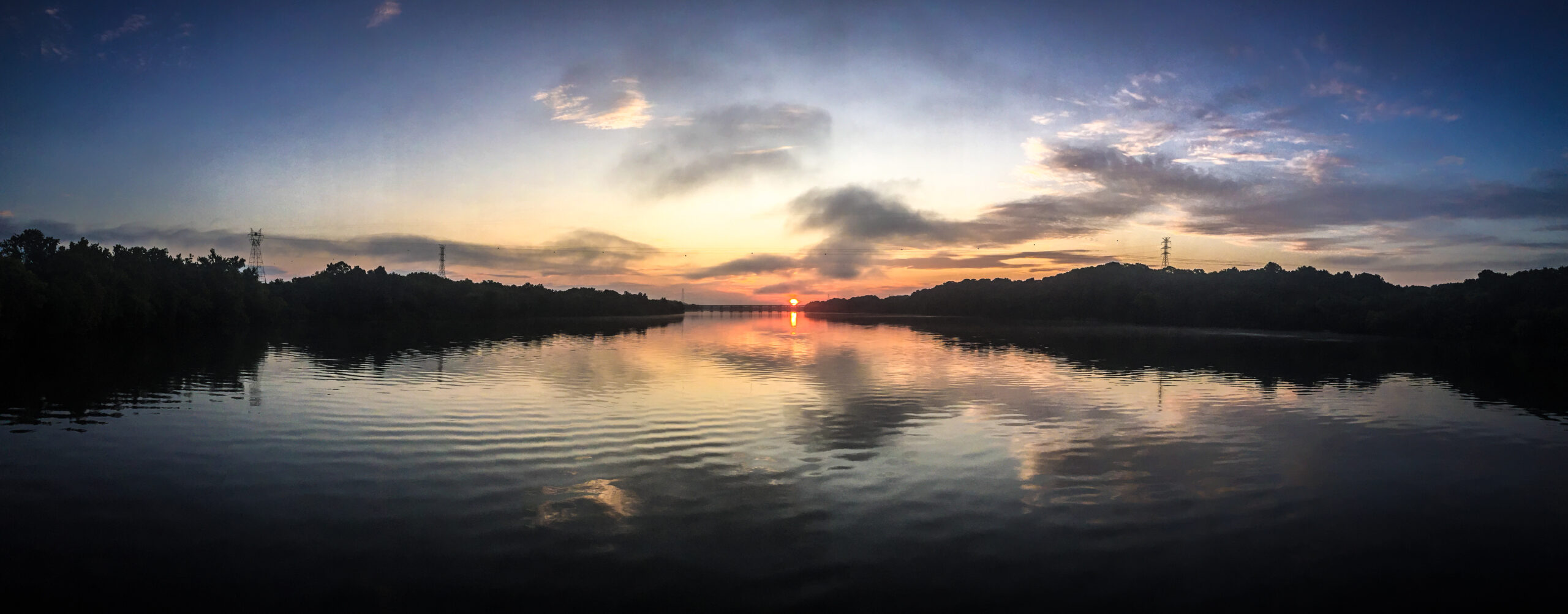This opinion article was written by Dr. Penelope Mitchell.
The Alabama Water Institute (AWI), the American Water Works Association (AWWA) – AL/MS Section, and Alabama’s Water Environment Association (AWEA) hosted the Water Technical Summit Jan. 9 at The University of Alabama. I attended as an interloper, or so it seemed, given that most of the folks there were engineers or water/wastewater treatment practitioners, and I am not.
My intention was not to learn the literal ins and outs of septic systems, but rather to pick up some useful nuggets about the status of water and wastewater systems. Particularly, because I’m curious about what is going on with waste systems in the Black Belt of Alabama—the news stories on the situation have not been good. Also, how are wastewater treatment folks dealing with extreme rainfall events? I’m pretty sure we all want our waste to stay out of sight and our household water to be clean and plentiful! If these topics are of interest to you, I’ll give you the rundown of what I learned.
Dr. Mark Elliott kicked off the day talking about Wastewater Challenges and Solutions in Black Belt Counties. The background of the problem is the Black Belt counties have predominantly blackland prairie soils (vertisols) which is a clay that shrinks when dry and swells when wet, becoming impermeable. These rural communities are sparsely populated, largely low income, and predominantly African-American.
Many towns in the Black Belt have inefficient or non-existent wastewater systems. Typical residential septic systems fail in these soils because they prevent infiltration of effluent. This makes proper wastewater management financially infeasible for many residents and causes them to resort to straight pipe systems that lead sewage from the home to a ditch or the like, where it sits because the soils are mostly impermeable. Dogs cool off in the ‘muck’ in the summer, children play near it, their balls accidentally land in it, when it rains the effluent overflows the ditch into the yard, and this is the basic pathway for fecal pathogens to work their way into the home. Surveillance of health impacts has been minimal because there is also a shortage of primary care providers in the region.
The story has made international news—so what is happening to remedy the problem? Elliott outlined various solutions including expanding sewer systems where possible and leveraging improved technologies in single home onsite wastewater treatment systems, but emphasized the viability of clustered decentralized treatment systems. Federal funding from the American Rescue Plan Act (ARPA) and the Bipartisan Infrastructure Law will enable much of the capital investments required, but challenges remain.
The implementation timeline for ARPA is tight. The federal funding mechanisms are rigid—they are designed for working with larger municipalities with existing infrastructure and for using conventional technologies not appropriate for this context. Other contextual obstacles making upgrades difficult include ‘heir’ properties—properties passed down through generations that have no clear title—and single properties that contain multiple homes.
But efforts persist by many parties; so many that the Consortium for Alabama Rural Water and Wastewater Management was created to facilitate communication and collaboration between the regulatory community, academic institutions, elected officials, community groups, and representatives from the water and wastewater industry for the purpose of finding equitable and sustainable solutions. It will be exciting to see how wastewater upgrades play out in this region over the next few years.
I also learned about capital improvement plans for wastewater systems and pilot studies for wastewater treatment. Capital improvement plans (CIPs) relate to investment in new infrastructure or adding capacity to existing infrastructure. An objective included in this wastewater CIP that piqued my interest was improving the system to be robust enough to handle ‘abnormal’ flow events. They set a figure at 55 million gallons a day. I had to ask, how did they come up with that number? But I didn’t get more detail than it was an ‘educated guess’…I’m hoping someone involved in the plan was looking at rainfall projections and thinking about adaptation, but I was left to wonder.
Getting more into the weeds of wastewater, representatives from the Athens, Alabama, water treatment plant discussed a chlorine dioxide pilot study. Why should we care about that? Again, it is related to heavy rainfall events. The rainfall events the system was accustomed to are about 3 to 4 inches. A 10+-inch rain occurred, causing an excursion from acceptable turbidity levels and triggered an operational evaluation—not good. The normal chemical cocktail was not working to effectively treat the water. In response, they ran a pilot and found chlorine dioxide to reduce algae growth and turbidity and saved money.
Interesting tidbit: Chlorine dioxide can make the water smell like cat pee. They had to do some tweaks to try to neutralize the smell—nice to hear they were considering customer feedback! Overall, my takeaway here was that these municipalities are having to deal with increasing heavy rain events and having to adapt to maintain clean water standards.
Now, let’s talk about some less noticeable potential toxins in our water. You may have seen in the news that the EPA has proposed a mandatory replacement requirement of all lead and galvanized service lines under a water system’s control. Relatedly, lead service line inventories are taking place now and must be completed by October 16, 2024. Municipalities are knocking this out and storing the spatial data using handy Esri platforms. In theory, this should make it easier for customers to inquire about their connectivity to lead pipes. And ultimately, if this rule goes forward as proposed, improvements to lead testing and public notification will be made.
Another notorious toxin potentially building up in our water is per- and polyfluoroalkyl substances—more commonly known as PFAS. UA’s Dr. Leigh Terry spoke about her upcoming project to help narrow the gap in PFAS detectability. PFAS are a very strong and useful class of chemicals found in flame retardants, stain proofing, water proofing, non-stick cooking pans and loads of other consumer products. PFAS are forever chemicals that don’t break down in our bodies or in the environment, linked to a wide array of serious health problems such as cancer, birth defects, and decreased immunity.
There are over 15,000 PFAS compounds, roughly 4700 are on the global market, yet current research and regulations focus on about 30 targeted substances. Problematically, tests to detect PFAS are targeted, meaning thousands of PFAS compounds are currently undetectable. Dr. Terry’s work seeks to measure unknown/unidentified PFAS through a bulk parameter as a key indicator of PFAS in general. This process would allow utilities and states to get a better handle on the scale of PFAS in our water. A useful widget I took home from this talk was EPA’s PFAS analytical tools—you can see where PFAS testing is reported and occurrences in communities. I was happy to see Tuscaloosa (where I live, and where GWSC is headquartered at UA) was doing ok!
All in all, I went out of my comfort zone to get some insights on what’s happening with national and state water/wastewater infrastructure. There are some hefty challenges, but it was nice to see some progress being made locally. Somewhat ironically, as I stepped out of the meeting, I saw a news story on a sewage overflow in Tuscaloosa that sent 42,000 gallons of sewage into Tuscaloosa creeks from another heavy rain event that overwhelmed the aging sanitary sewer system. Unfortunately, this type of event is not uncommon given that our aging wastewater infrastructure cannot handle the increasing intensity and frequency of rain events occurring. Perhaps next time the summit convenes there will be some discourse on wastewater adaptation plans.

